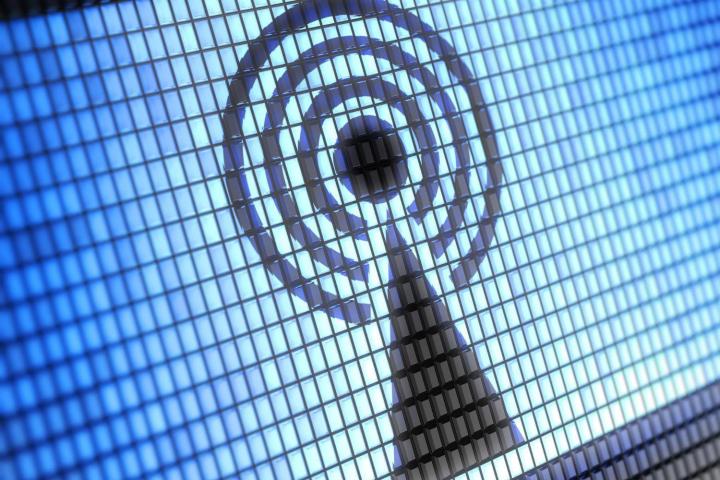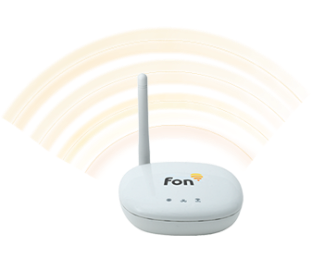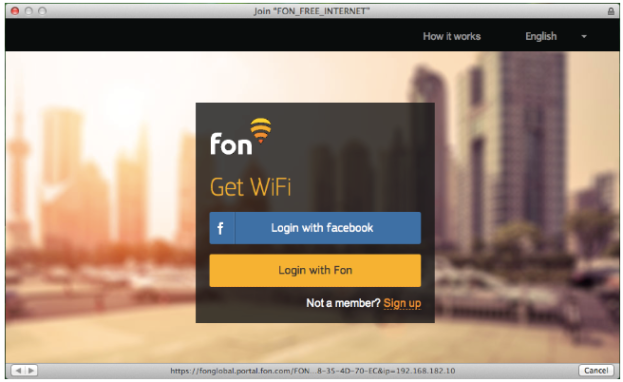
The barriers between consumers and ever-present Wi-Fi are breaking down, and quickly. A hotspot or wireless network is almost constantly within easy reach: Coffee shops, restaurants, airports, buses, trains, parks, theaters, department stores, stadiums, airplanes.
Wi-Fi is quickly becoming a democratized economy. Now that the Internet and even Facebook are considered a human right by many, it makes sense to assume the means by which we get these things should become more and more accessible.
Still, the Wi-Fi desert is a real concern, and there are plenty of issues with current providers that keep people Wi-Fi-less – so if it is going to become a democratized tool of the masses, the system by which we procure it has to evolve. That’s the idea behind Fon.
“It’s a way for people to share their networks in a way that is comfortable and safe for them.”
Fon was founded in 2006 and has been busy propagating its “give a little, get a lot” business model since then, mainly in Europe. The sharing economy will tap blood from a stone, and Fon is applying the concept to Wi-Fi. Fon piggybacks on its users’ existing Wi-Fi router, using the two signals; a private one for the router owner and another for Fon network users. The owner of the original network never suffers slow bandwidth or any other overloaded network issues because they are operating on their own signal, keeping them free from whatever the other Fon users are doing. Users of these “public” networks sign in through a webpage, enter their created Fon credentials, authenticate, and connect – much like when you’re at the airport or Starbucks.
Because of the way Fon is setup, it’s technically the largest Wi-Fi network in the world, with 12 million hotspots worldwide. Of course, most of them are abroad, most notably in Europe and Asia. In the U.K., Fon is partnered with British Telecom, which builds the Fon platform into all of its routers – giving the company a huge advantage. In fact, London is representative of how Fon can ideally work, ably covering block after block of the city. “It’s near ubiquitious in London,” Fon CEO Nina Sodhi says.

Sodhi says that founder Martin Varsavsky had the idea while in another European city: Paris. “He was sitting at a Paris cafe around 2 p.m. in the afternoon, looking to get online,” Sodhi says. “What he saw was a long list of Wi-Fi signals that were all locked. Being that it was a Tuesday in the afternoon, he thought, most people aren’t even home right now and while they should have their Wi-Fi locked, if I could just find a way to use just a little bit of their Wi-Fi …”
“He wanted to create a way for people to share their networks in a way that was comfortable and safe for them.”
And thus, Fon was born. Now, the platform is making its U.S. entrance, starting in New York, where it already has some members (mostly early adopters and expats). The introduction includes the network as well as its own branded router, the Fonera.

Of course as Fon makes its stateside push, it faces a significant challenge in competing with existing networks, many of which are looped into cable TV and home phone (the remaining, what, seven?) plans. To that, Fon says the Fonera can work as a Wi-Fi booster. Areas experiencing spotty coverage can be fixed by placing the router there and configuring it to help out your network, while also helping spread Fon’s reach with that second, “public” signal.

U.S. users rely on data more often, but that of course comes at a personal financial cost. And there’s also the previously mentioned barren pockets of the country where wireless networks are absent. “We’re at the point in the U.S. where users are finding a very new and unique need for Wi-Fi.” Eventually – perhaps very soon – new methods will be tested. And Fon wants to be one of them.


